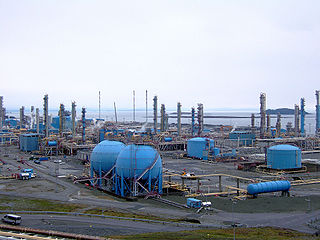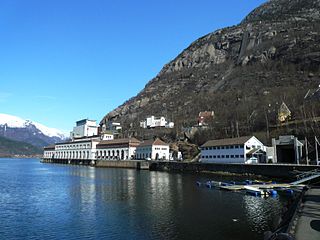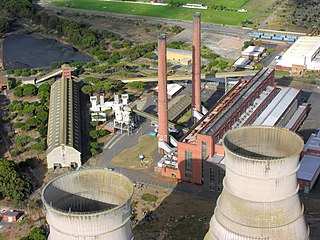
NeXT, Inc. was an American computer and software company founded in 1985 by Apple Computer co-founder Steve Jobs. Its name was usually pronounced as "Next". Based in Redwood City, California, the company developed and manufactured a series of computer workstations intended for the higher education and business markets. NeXT was founded by Jobs after he was fired from Apple, along with several co-workers. NeXT introduced the first NeXT Computer in 1988, and the smaller NeXTstation in 1990. The NeXT computers experienced relatively limited sales, with estimates of about 50,000 units shipped in total. Nevertheless, their innovative object-oriented NeXTSTEP operating system and development environment were highly influential.

Nesbyen is a town in Nes municipality in the county of Buskerud, Norway. Nes is the administrative center of Nes municipality. Nes is located in the traditional district of Hallingdal.

The Begna is a river in Buskerud and Oppland counties in Norway. It is formed by the merging of the rivers Otrøelva and Ylja above Lake Vangsmjøsa. It is also the name of the village of Begna located by the river. The Norwegian writer, Mikkjel Fønhus lived much of his life and located most of his novels along the Begna in Oppland.
Brommafjorden is a lake in the municipality of Nes in Buskerud county, Norway. Brommafjorden is part of the Hallingdal River (Hallingdalselva). This is quite possibly the widest and most quiet part of the Hallingdal River. Brommafjorden was the site of Bromma station, a now-defunct rail station on the Bergen Railway .It was opened in 1907 when Bergen Railway was opened to Gulsvik and was operated until 1984.
Nygardsvatnet is a lake in the municipality of Hol in Buskerud county, Norway. The lake is situated south of the Hallingskarvet mountain range. The lake serves as a reservoir for Usta kraftverk, a hydroelectric plant which was put into operation in 1965. The water level is controlled by a dam at the outlet and a tunnel down to lakes Sløddfjorden and Ustevatn. The Usta kraftverk power plant is owned and operated by E- CO Energi.

Rødungen is a lake in Buskerud county, Norway. The lake is located on the border between the municipalities of Ål and Nore og Uvdal. Waterfall from the lake is a power source for Usta kraftverk, a hydro-electric plant. The power station exploits the fall of the Usta river from Rødungen as well as Ustevatn.The plant started production in 1965 and is owned and operated by E- CO Energi.

Kårstø is an industrial facility located near the village of Susort, along the Boknafjorden, in the municipality of Tysvær in Rogaland county, Norway. The site features a number of natural gas processing plants that refine natural gas and condensate from the fields in the northern parts of the North Sea, including the Åsgard, Mikkel, and Sleipner gas fields. The Kårstø processing complex is Europe's biggest export port for natural gas liquids (NGL) and the third largest in the world. The industrial site is also the location for the now-closed Kårstø Power Station.
E-CO Energi is a Norwegian power company and after Statkraft the second largest producer of electricity in Norway.

Mongstad Power Station is a natural gas-fired thermal power plant under construction at the industrial site of Mongstad in Norway.

Tjeldbergodden Reserve Power Station is a natural gas-fired thermal power plant located at the industrial site Tjeldbergodden in the northeastern part of the municipality of Aure in Møre og Romsdal county, Norway. It is operated by Statnett. The station has installed one gas turbine with 150 megawatts (200,000 hp) effect. The power station was installed in 2006, but by 2015 it had not been in use. Together with the similar power plant at Nyhamna, they cost 2.1 billion NOK. A new power line has made them unnecessary.
Medway Power Station is a 735 megawatts gas-fired power station on the Isle of Grain in Medway next to the River Medway.
The Paatsjoki River hydroelectric power plants are a series of hydroelectric installations on the Paatsjoki River.

The "NE Train" (NEトレイン) is an experimental railcar which has been used to test a number of alternative power sources by the Railway Technical Research Institute (RTRI) and East Japan Railway Company in Japan since 2003.
Namanve Power Station is a 50 MW heavy fuel oil-fired thermal power plant in Uganda. Sometimes the power station is referred to as Kiwanga Power Station.

Ulla-Førre is a hydropower complex in Suldal, Hjelmeland and Bykle in Norway. It has an installed capacity of approximately 2,100 MW, and the annual average production is 4.45 TWh (16.0 PJ) (1987-2006), while its annual potential is about 7.8 TWh (28 PJ). The complex includes the artificial lake Blåsjø, which is made by dams around 1,000 metres (3,300 ft) above the sea level. The hydroelectric power station in the complex are Saurdal, Kvilldal, Hylen and Stølsdal, operated by Statkraft.

Bugoye Power Station is a 13 MW (17,000 hp) mini hydroelectric power station in Uganda. In the literature, Bugoye Power Station is sometimes referred to as Mubuku II Power Station.

The Aurland Power Station is a hydroelectric power station located in the municipality Aurland in Sogn og Fjordane, Norway, owned by E-CO Energi. It consists of five facilities, Aurland I, Aurland II, Aurland III, Reppa and Vangen, and operates at a combined installed capacity of 1,128 MW, with an average annual production of 2,869 GWh. The construction works were initiated in 1969, and the first production from Aurland I started in 1973.

The Såheim Power Station is a hydroelectric power station located in Rjukan, Telemark, Norway, operated by Norsk Hydro. It operates at an installed capacity of 185 MW, with an average annual production of 1,033 GWh. The station building from 1915 was designed by architects Thorvald Astrup and Olaf Nordhagen.

The Tyssedal Power Station is a hydroelectric power station and museum located in Tyssedal in the municipality Odda in Hordaland, Norway. The station was designed by architect Thorvald Astrup. It started production in 1906 and operated at a combined installed capacity of 100 MW from 1918, with an average annual production of 700 GWh. The plant was protected by the Norwegian Directorate for Cultural Heritage in 2000, and is part of the Norwegian Museum of Hydropower and Industry. The power station was added to the list of priority technical and industrial cultural heritage by the Norwegian Directorate for Cultural Heritage.















